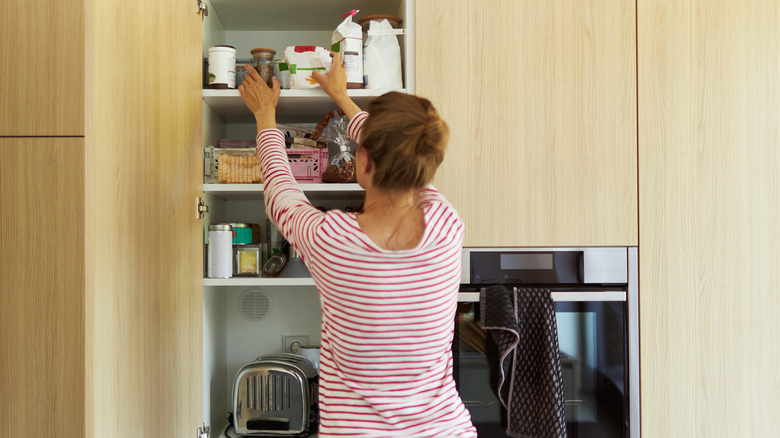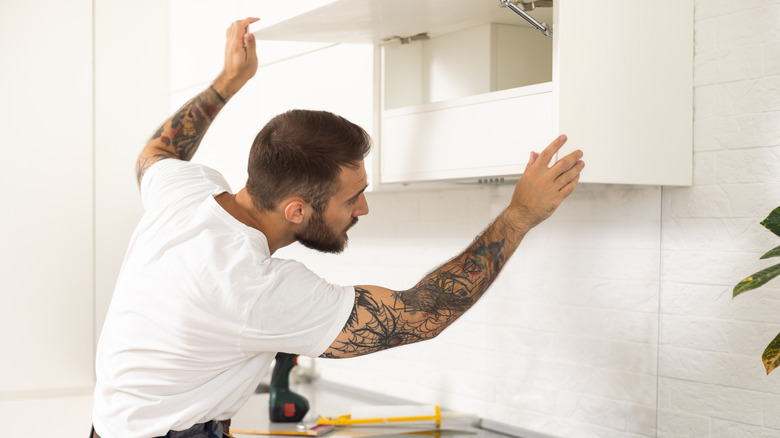Clear Signs Your Cabinets Are In Danger Of Collapsing
Whether you build your own kitchen cabinets or have an expert do the heavy lifting, choosing the right ones can elevate the entire space. However, it's not just aesthetics you'll need to consider. A falling cabinet is a real danger that can result in serious injury, so it's imperative that wall-mounted cabinets be installed correctly. Anchors and screws need to match the weight of your hanging storage, as well as the wall type, although drilling into wall studs will be the preferred method in most kitchens.
If the installation was done incorrectly or the shelf load is too heavy, you may soon notice telltale signs that your cabinets are in danger of collapsing. The most obvious clue that something is going wrong will be a cabinet that's tilting forward and away from the wall, or one that appears to be sliding out of place, whether downwards or to the side. That being said, there are also two less obvious signs to check for. The Premises Safety group at Robson Forensic recommends looking for drywall dust underneath the cabinets, as this could signal structural weakening. What's more, look at the screw heads inside the cabinets to verify if there is any warping in the panel around them. If you spot even one of these issues, quickly address it in order to avoid any harm. This can either be done by a professional or you can fix your kitchen cabinets yourself.
How to properly reattach loose kitchen cabinets
Once you've confirmed that your kitchen cabinets aren't hung properly and securely, remove everything from inside and take off the doors. Next, locate the wall studs behind them using an electronic stud finder. Studs are vertical boards that run 16 or 24 inches apart behind your wall, offering stability. As cabinets are heavy, the wall alone will not be strong enough to support them. By attaching your cabinetry to the studs instead, you'll ensure the screws are not pulled out under the weight of the cabinet.
Run the stud finder horizontally against the wall to locate the first stud, then mark the middle of it. Search for the next one, again marking the middle, then start to work vertically, marking space for three screws along each stud: one at the top, middle, and bottom. Using #10 3-inch screws, simply re-screw the cabinet into the wall studs and check that it is no longer moving. For added security, use construction adhesive to fill in any gaps or, if you spot big spaces between the wall and your cabinet, slide shims in between before screwing the cabinet in place.
Alternatively, if you've caught the issue too late and the cabinets have pulled so far away as to leave behind major holes, it's best to remove them completely and reinstall them properly from scratch (after patching up the holes in the wall).

